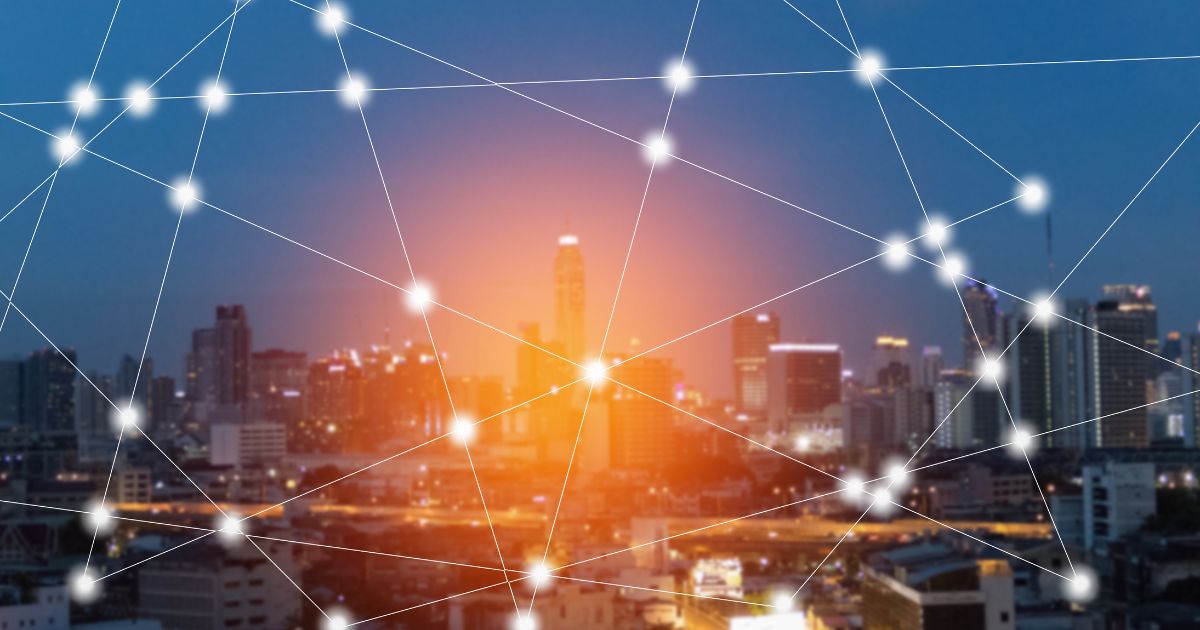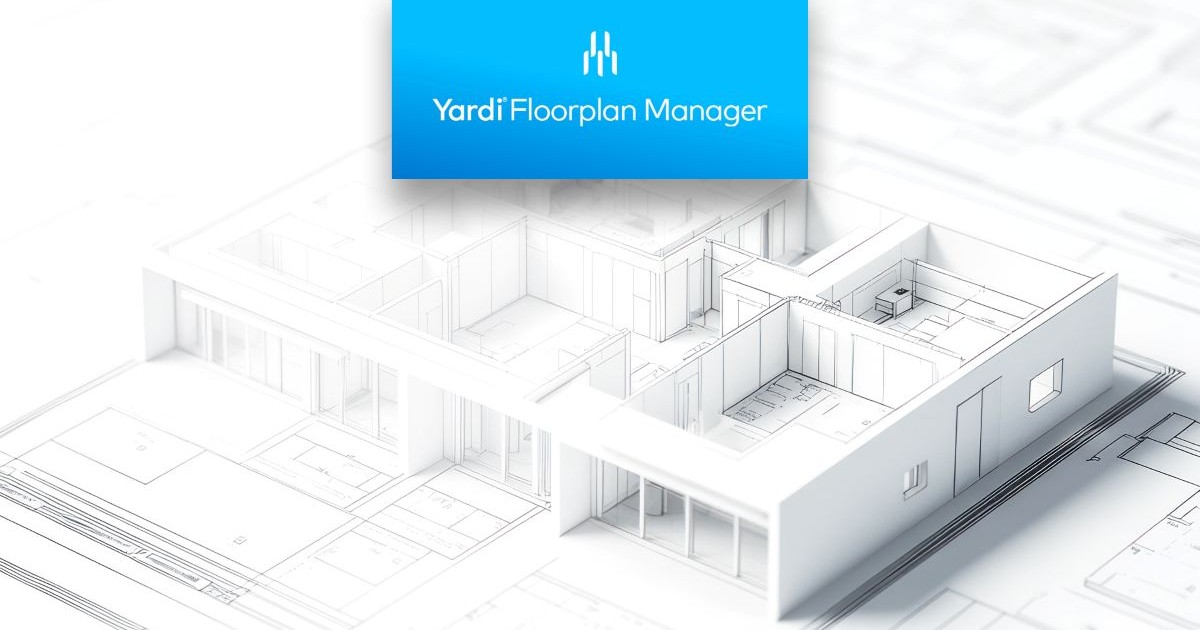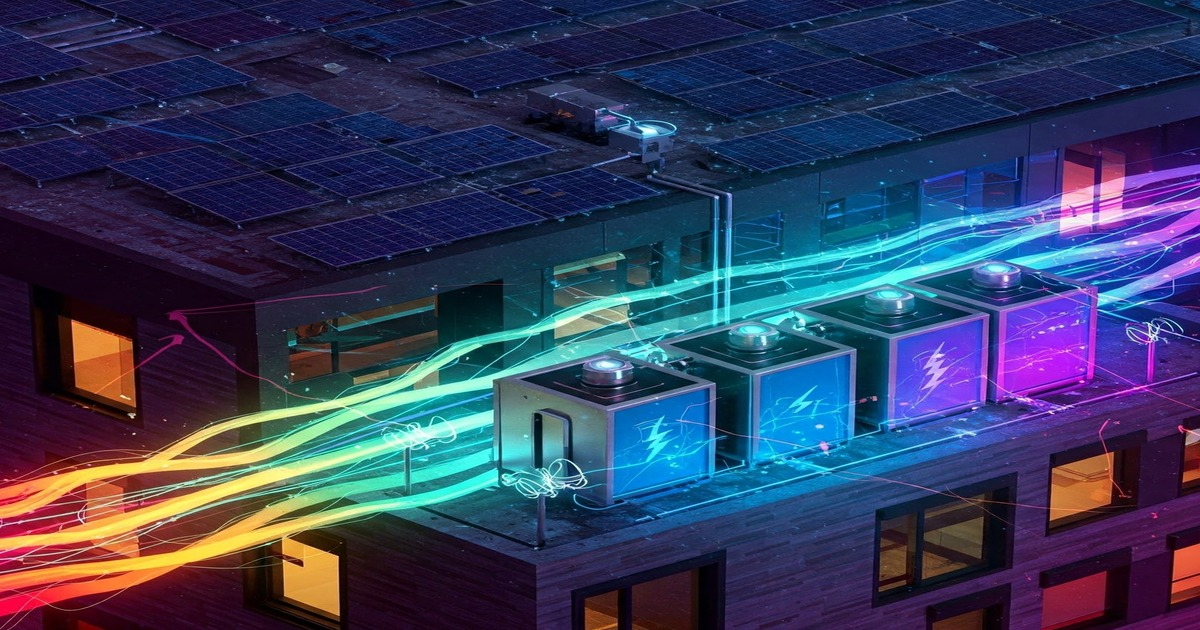The Convergence of Edge Computing, Cloud, and AI in Building Automation and Smart Buildings

In the built environment, we have seen the convergence of Operational Technology (OT) and Information Technology (IT), later expanding to include Workplace Technologies (WP). This convergence has transformed how buildings are designed, managed, and experienced – streamlining building management systems, strengthening cybersecurity, enhancing user experiences, and improving operational efficiency.
Now, in 2025, a new era of convergence is reshaping the landscape with the fusion of edge computing, cloud computing, and artificial intelligence (AI). This powerful trifecta is driving a fundamental shift in how buildings operate, making them more intelligent, data-driven, and responsive. By working together, these technologies are optimizing performance, enhancing efficiency, delivering new outcomes, and unlocking new possibilities for the built environment.
The Role of Edge Computing in Smart Buildings
Edge computing refers to the practice of processing data closer to its source, at the "edge" of the network, rather than relying solely on centralized cloud servers. In building automation, edge devices such as controllers, gateways, and smart sensors perform real-time analytics and decision-making locally. This approach offers several key benefits:
- Low Latency: Edge computing reduces latency by processing data on-site, which is critical for real-time applications such as HVAC optimization, lighting control, and security monitoring.
- Bandwidth Efficiency: By filtering and analyzing data at the source, edge computing minimizes the amount of data that needs to be transmitted to the cloud, reducing network congestion and lowering costs.
- Reliability and Resilience: Buildings must maintain operations even when connectivity is lost. Edge computing ensures that critical systems can continue to function without relying on an always-on cloud connection.
- Enhanced Security: Processing sensitive data locally minimizes exposure to cyber threats that may arise from transmitting data over public networks.
The Expanding Role of the Cloud in Building Automation
While edge computing plays a crucial role in real-time processing, cloud computing is essential for large-scale data storage, deep analytics, and integration with external platforms. Cloud platforms provide the backbone for modern smart buildings, enabling powerful capabilities such as:
- Scalability: Cloud-based building management systems (BMS) can manage multiple sites from a single interface, making it easier for large enterprises to oversee operations across multiple locations.
- Data Aggregation and Long-Term Analysis: Historical data from building systems can be stored and analyzed in the cloud, enabling trend analysis, predictive maintenance, and benchmarking against other buildings.
- Remote Access and Management: Facility managers can monitor and control building systems from anywhere, enhancing operational flexibility and efficiency.
- Interoperability and Integration: Cloud platforms facilitate the integration of various building technologies, including IoT devices, legacy systems, and third-party applications, creating a more cohesive and intelligent ecosystem.
AI-Powered Intelligence for Smart Buildings
AI is the key that unlocks the full potential of both edge and cloud computing in building automation. AI-driven solutions enable buildings to self-optimize, learn from historical patterns, and make data-driven decisions. Some of the most impactful AI applications in smart buildings include:
- Predictive Maintenance: AI can analyze equipment performance data and predict failures before they occur, reducing downtime and maintenance costs.
- Energy Optimization:Machine learning algorithms can adjust HVAC, lighting, and other building systems dynamically based on occupancy patterns, weather forecasts, and energy pricing.
- Fault Detection and Diagnostics (FDD): AI-powered FDD systems continuously monitor building systems, identifying inefficiencies and potential failures before they escalate into costly problems.
- Occupant Experience Enhancement: AI-driven solutions can personalize environmental settings, such as temperature and lighting, based on individual preferences and behaviors.
- Security and Safety: AI enhances security through advanced video analytics, anomaly detection, and intelligent access control systems.
The Synergy Between Edge, Cloud, and AI
The real power of smart buildings today lies in the seamless interplay between edge computing, cloud, and AI. These technologies complement each other in a way that maximizes efficiency and intelligence:
- Edge AI for Real-Time Processing: AI models can be deployed on edge devices to perform real-time analysis without relying on cloud connectivity. For instance, an AI-powered HVAC controller can make instant adjustments based on real-time sensor data.
- Cloud AI for Advanced Analytics: More complex AI algorithms requiring substantial computational power can be executed in the cloud, where large datasets from multiple buildings can be analyzed to uncover broader insights.
- Hybrid Models for Efficiency: Many smart building applications leverage a hybrid approach, where edge computing handles real-time tasks while the cloud manages long-term data analysis and system-wide optimization.
The Future of Smart Building Automation
The convergence of edge computing, cloud, and AI is just beginning to reshape the building automation landscape. As technology continues to evolve, we can expect:
- Greater Adoption of AI-Driven Automation: More buildings will deploy autonomous AI-driven management systems that continuously optimize performance with minimal human intervention.
- Standardized Integration Frameworks: Industry efforts to establish open standards (such as Project Haystack) will enhance interoperability between building systems and cloud platforms.
- More Energy-Efficient and Sustainable Buildings: AI and edge computing will drive energy efficiency at an unprecedented scale, helping organizations meet sustainability goals and regulatory requirements.
- Advancements in Edge AI: The next generation of edge devices will feature increasingly powerful AI capabilities, reducing dependence on cloud processing while maintaining intelligence at the source.
Conclusion
The convergence of edge computing, cloud, and AI is revolutionizing building automation, unlocking new levels of efficiency, delivering new outcomes and intelligence, and sustainability. By leveraging the strengths of each technology, smart buildings can operate more autonomously, optimize resource usage, and enhance occupant experiences. However, successful implementation requires overcoming interoperability challenges, ensuring robust security, and embracing open standards and platforms. As industry continues to embrace technology, businesses that encompass this transformation will be well-positioned to lead the next era of smart building innovation.
This Week’s Sponsor
One Platform. Many Possibilities. Founded in 2002, Lynxspring develops and supports edge-to-cloud solutions and IP technology for smarter buildings, equipment, and operations. Its open software and hardware platforms enable connectivity, control, integration, and data visualization to drive business outcomes. With deep expertise in the built environment, Lynxspring delivers powerful, cost-effective solutions for system integrators, owners, operators, and manufacturers. Deployed across millions of square feet in commercial and government spaces, its technology enhances efficiency and interoperability worldwide.
Read Next
 5/15/2025
5/15/2025
Tech, Talent and Transformation: 2025 Digie Finalists Announced For 27 years, Realcomm has presented the Digie Awards to acknowledge companies, real estate projects, technologies, and individuals that have advanced the commercial real estate industry through the strategic use of technology, automation, and innovation.
 5/15/2025
5/15/2025
Empowering Space Management with Data-Driven Visualization For effective CRE space management, it’s critical to centralize lease data, maximize rental square footage (RSF), improve energy efficiency and reconfigure spaces to meet changing needs.
 5/8/2025
5/8/2025
The AI-Powered Workplace Evolution: Redefining the Business Landscape In today's rapidly evolving business environment, the fusion of Artificial Intelligence (AI) and Workplace Management is revolutionizing the way organizations approach workspace optimization and operational efficiency.
 3/27/2025
3/27/2025
DC Power: A Holistic Approach to Energy Savings in Commercial Buildings In today's energy-conscious world, businesses constantly seek ways to reduce their carbon footprint and operational costs.




%20(1)%20(1)%20(1).png)






